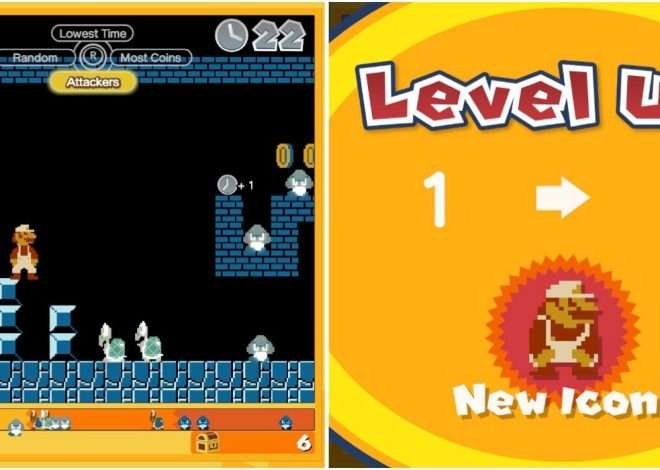Times Square’s 5G Interactive Billboard: A New Era in Advertising
The bustling heart of Times Square, a canvas for colossal advertisements, recently witnessed a technological leap․ A 5G-enabled billboard briefly transformed the iconic location into a massive interactive game, captivating passersby and showcasing the potential of next-generation connectivity․ This innovative approach to advertising signifies a pivotal shift in how brands engage with audiences, moving beyond passive observation to immersive, real-time interaction․ The implications are far-reaching, promising a future where public spaces seamlessly blend entertainment and commerce․
The Technological Marvel: How it Worked
The 5G-powered billboard utilized cutting-edge technology to deliver a seamless and responsive interactive experience․ High-speed data transmission, a key feature of 5G, allowed for instantaneous feedback from users’ smartphones․ Participants simply needed to point their devices at the billboard; sophisticated image recognition software then integrated their phones into the game․ The experience was incredibly smooth, thanks to the low latency of the 5G network, ensuring minimal lag time between actions and reactions on-screen․ This technology effectively bridged the gap between the digital and physical worlds, creating a unique and memorable experience․
Image Recognition and User Interaction
The system’s success hinged on its sophisticated image recognition capabilities․ The billboard’s software could identify the unique features of various smartphones, instantly recognizing when a player aimed their device at the screen․ This allowed for a personalized and seamless interaction, eliminating the need for complicated logins or QR codes․ Once recognized, the game would begin, incorporating the phone’s display into the larger experience․ The game itself was simple yet engaging, designed to capture attention and showcase the potential of the technology without overwhelming the user․ The design intentionally prioritized a simple and intuitive user experience․
The Impact on Advertising and Public Engagement
The brief experiment in Times Square demonstrated the transformative potential of 5G technology in advertising․ It moved beyond the traditional one-way communication of billboards, fostering active participation and creating a memorable experience for the public․ This interactive format is far more engaging than a static image; it sparks curiosity and encourages interaction, resulting in higher levels of brand recall and positive sentiment․ The potential for increased engagement is significant, suggesting a revolution in how brands create meaningful connections with consumers․
Beyond Games: Expanding the Possibilities
While the initial experiment focused on a simple game, the applications extend far beyond entertainment․ Imagine billboards that provide real-time information updates, interactive product demonstrations, or personalized advertisements tailored to individual preferences based on data collected through secure and user-consented methods․ The possibilities are truly limitless․ The technology could facilitate interactive public service announcements, educational campaigns, or even community-building initiatives․ This technology can be a powerful tool for public engagement and education․
Challenges and Considerations
Despite the immense potential, several challenges need addressing before widespread adoption․ High initial investment costs associated with the necessary infrastructure present a significant hurdle for many advertisers․ Furthermore, ensuring seamless functionality across various devices and operating systems requires robust testing and development․ Addressing privacy concerns and user data security is also critical․ Transparency and user consent will be paramount to building trust and responsible use of this technology․ Maintaining a consistent and high-quality user experience across diverse network conditions is also a key challenge․ This will require ongoing monitoring and optimization․
Addressing Privacy and Data Security
The collection and use of user data raise important privacy concerns․ It’s essential that any implementation prioritizes data security and user consent․ Clear and transparent data collection policies, along with robust security measures, are crucial to building public trust․ This might involve anonymizing data or using privacy-preserving technologies to protect user information․ Open communication about data practices is essential to foster responsible innovation and adoption of this technology․
The Future of Interactive Advertising
The 5G-enabled billboard in Times Square served as a powerful demonstration of the evolving landscape of advertising․ It marked a significant step towards a more immersive and engaging experience for consumers․ The shift from passive observation to active participation holds immense promise for brands seeking to connect with audiences on a deeper level․ The ability to create personalized, dynamic experiences tailored to individual preferences is particularly compelling․ This personalization is a key factor in enhancing engagement and generating positive brand sentiment․
- Enhanced Brand Recall: Interactive experiences leave a lasting impression, leading to greater brand awareness and recognition․
- Increased Customer Engagement: Active participation fosters a stronger connection between brand and consumer․
- Targeted Advertising: Personalized experiences cater to specific interests and demographics, improving advertising effectiveness․
- Data-Driven Insights: Interactive platforms offer valuable data on consumer behavior and preferences․
The potential benefits extend beyond commercial applications․ Imagine interactive public service announcements that grab attention and educate passersby on important issues․ Or interactive displays providing real-time information about local events and services․ The implications for community engagement and civic participation are significant․ This technology offers a multitude of opportunities to improve public spaces and services․
Technological Advancements and Future Implementations
The success of the Times Square billboard highlights the rapid pace of technological advancement in the advertising sector․ As 5G networks become more widespread and sophisticated, we can expect to see increasingly complex and immersive interactive experiences․ This could include augmented reality overlays, virtual reality integrations, and even haptic feedback systems, creating truly multi-sensory experiences for users․ The creative possibilities are extensive, limited only by the imagination of designers and developers․
- Augmented Reality (AR) Integration: Overlaying digital content onto the real world, enhancing the billboard’s visual appeal․
- Virtual Reality (VR) Experiences: Immersive virtual worlds accessible through mobile devices, offering a deeper level of engagement․
- Haptic Feedback: Providing tactile sensations, adding another layer of interaction and immersion․
- Artificial Intelligence (AI) Personalization: Tailoring the experience to individual preferences, maximizing engagement․
Further development and refinement of the technology will be crucial for widespread adoption․ This includes addressing technical challenges, ensuring data security, and promoting responsible use of user data․ Collaboration between technology companies, advertisers, and policymakers will be vital in shaping the future of interactive advertising․ This collaborative approach will be crucial in navigating ethical and societal implications․
The 5G-enabled billboard in Times Square represented more than just a novel advertising experiment․ It was a glimpse into the future of public engagement and interactive advertising․ The potential for enhanced brand recall, increased customer engagement, and targeted advertising is immense․ The seamless integration of technology and public space promises a future where information, entertainment, and commerce blend seamlessly․ Overcoming challenges related to cost, data privacy, and technological limitations will be crucial for realizing the full potential of this groundbreaking technology․ This exciting development opens up a world of possibilities for both businesses and the public․



